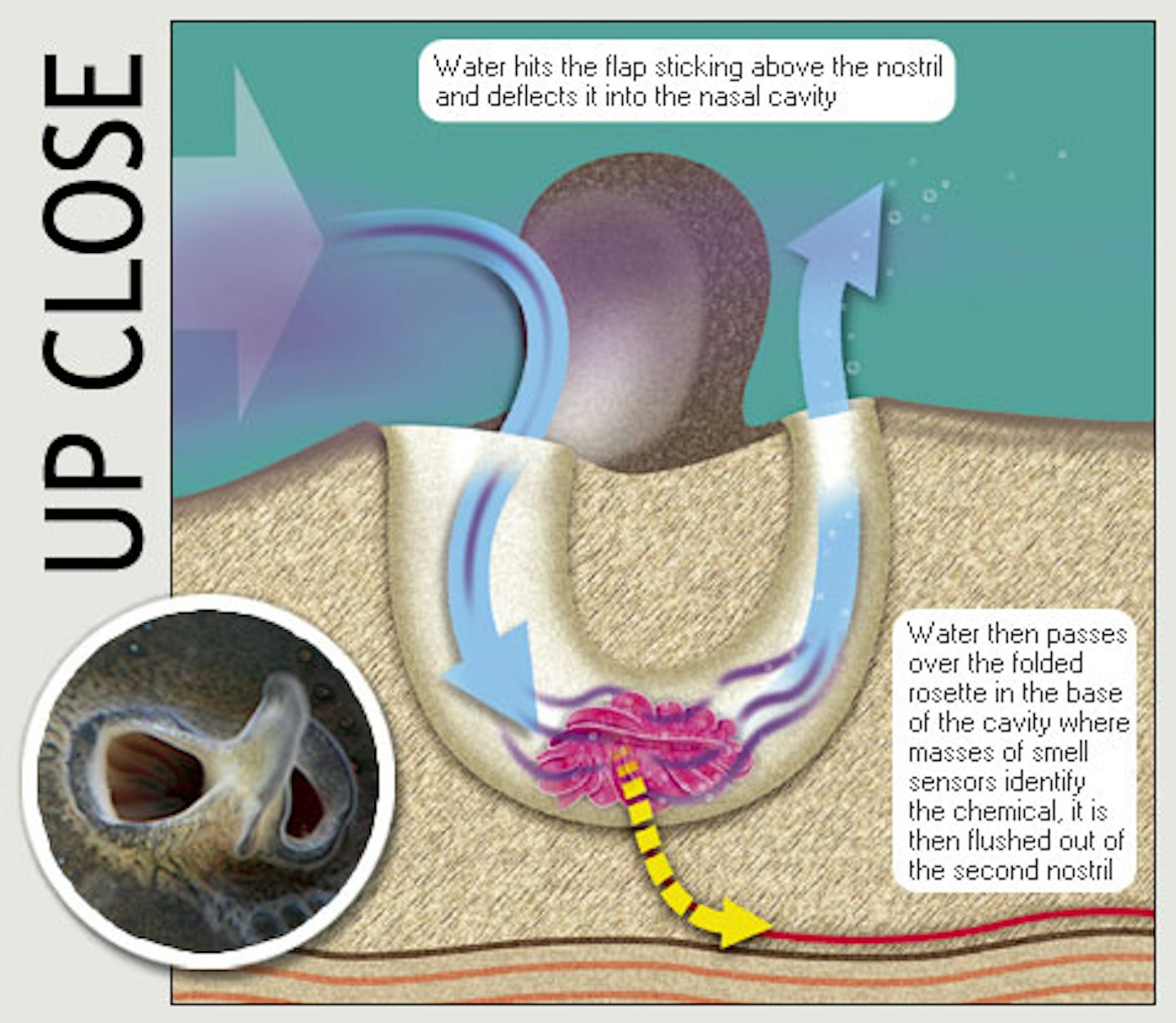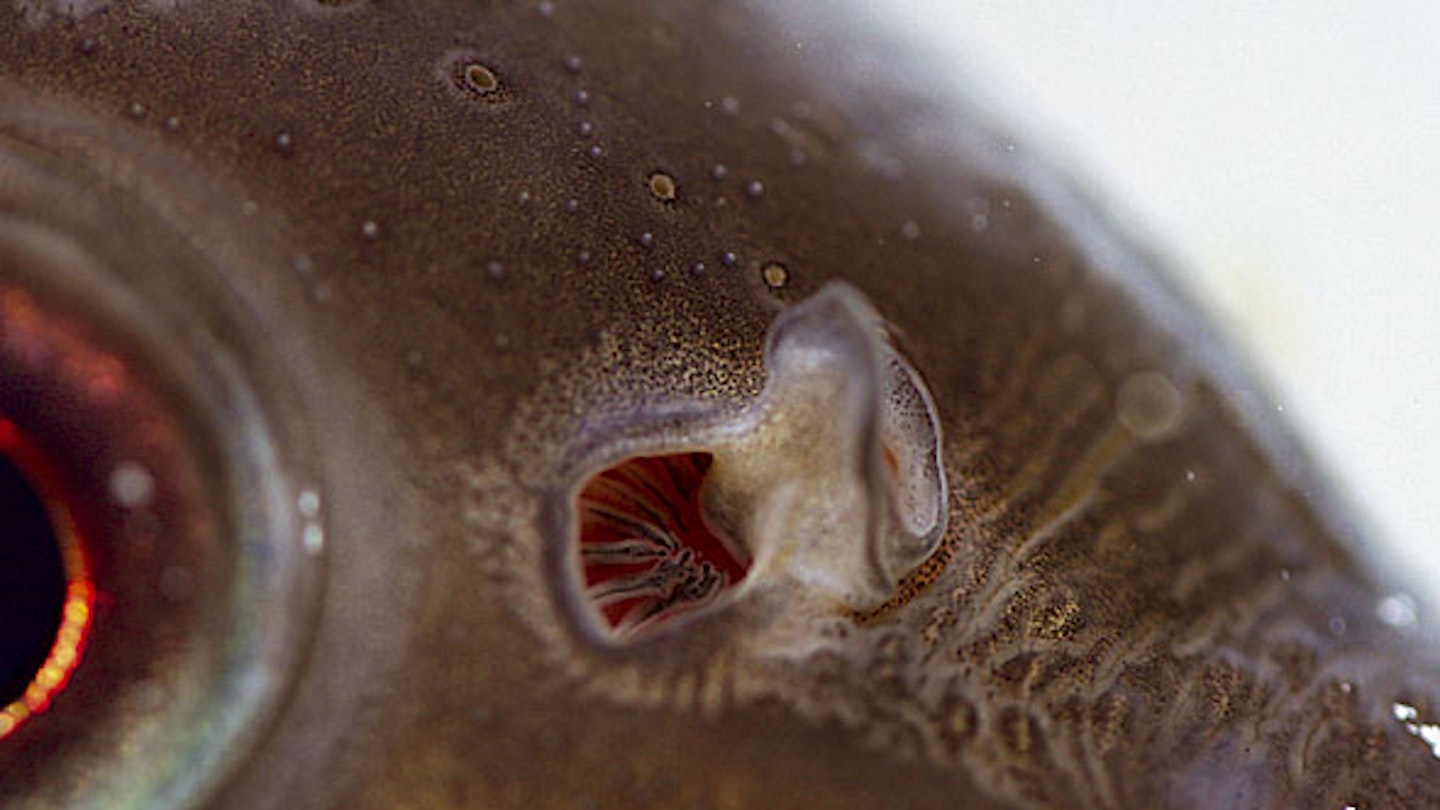Are fish attracted to the sweet aroma of strawberries or do they swim a mile? Dr Mark Burdass reveals the facts about what fish can smell and how bait flavourings can help you catch them...
THE IMPORTANCE OF SMELL
Underwater visibility is very poor in many fisheries so a good sense of smell is vital in allowing fish to find food.
What many anglers don’t realise is that smell is not only important in food location but, it also helps fish find a mate, detect predators and find fish they’re related to.
HOW DO FISH SMELL?
A fish’s highly tuned sense of smell is mainly based on a set of well developed nostrils located on the snout.
These nostrils, or nares, are complex structures and if you look closely you’ll see there are usually two holes, an inlet and outlet, on each one.
There are often flaps or fans which separate the two holes and also push water into the nostril as the fish moves.
Water moves in, usually by a pumping action caused by the fish’s breathing, and travels down to a folded structure called a rosette where all the sensory organs are located.
The number of sensory cells on this rosette can be as many as 500,000 per square millimetre.
The folding of tissue in the rosette creates a bigger surface area, making more room for sensory organs, but there are big variations between the smell sensitivity of different species.
For example, a pike can have less than nine folds per rosette while an eel can have 90.
Because eels also have a much denser coating of receptors, their sense of smell may be 1000 times better than a pike.
HOW FISHES NOSTRILS WORK

WHAT CAN A FISH SMELL?
The chemicals that fish can detect are varied but it’s those that the fish uses to find food which are of interest to anglers. The key substances are amino acids and bile acids. These will trigger feeding in most fish.
Amino acids are found in food items and some leak into the water, giving a scent trail for the fish to follow.
In fact, natural foods like worms and snails, which have no real smell to us, actually ‘leak’ low level amino acids into the water which fish can locate.
Salmonids (salmon and trout) have a limited smelling range but cyprinids (carp, roach, barbel, bream etc) have greater sensitivity to amino acids. They are far more likely to be stimulated by baits and additives with natural aminos.
Less well known are substances called bile acids. These are chemicals excreted by fish after they have digested their food, so their presence indicates feeding activity has taken place in an area. This can trigger other fish to search for food in the same spot.
The creation of bile acid is one of the reasons why regular loosefeeding is effective and why prebaiting a swim for a few days can often guarantee action.
Fish can also sense many of the chemicals we add to baits to make them more appealing.
If a new food with a unique smell is introduced to a fishery and the fish have learned that it’s food, they will soon search out that smell to find the food they associate with it.
It is unlikely to be the smell itself that a fish is attracted to, more the connection between the smell indicating the presence of food. However, as the bait is used more as a hookbait, they may begin to associate the smell with being caught rather than food. The bait will lose its attractiveness.
.jpg?auto=format&w=1440&q=80)
MORE ATTRACTIVE BAITS
Fish are able to detect these chemicals down to incredibly low levels although the mere presence of these in your bait will not guarantee success. There are lots of other things to consider.
For example, are the chemicals actually leaking out of your bait? What other scent trails are disguising the smell in the water? Is there a water flow which is carrying the trail? Are fish moving around sufficiently to find the bait? Has this scent been used a lot in the fishery and are the fish wise to it? Have the fish tuned into another source of food and are ignoring the presented bait and its scent?
Recent research on amino acids and their use as attractants has shown that, for most species, there is no single amino acid that gives the best result – a blend of aminos is what you’re after. But a blend that is good for tench may be less so for carp.
ARE FLAVOURINGS USEFUL?
Natural bait flavourings, containing amino and bile acids, are likely to be the most reliable chemicals to boost your bait. It’s also likely that adding lashings of flavour may work against you. Species with a highly folded smell rosette, such as cyprinids, can locate chemicals at very low levels. It is quite possible that loading a bait with a very high level of synthetic flavour may repel, rather than attract them. But, whatever bait you’re flavouring must have a good food value in its own right. Fish will soon stop eating a substance that has been enhanced with flavour but which has little nutritional value for them.
Remember though, even if a bait has a great food value and a great smell, it must still be cast in the right place to work. There is no such thing as an irresistible flavour and as long as that continues, the challenge of catching fish will remain.
